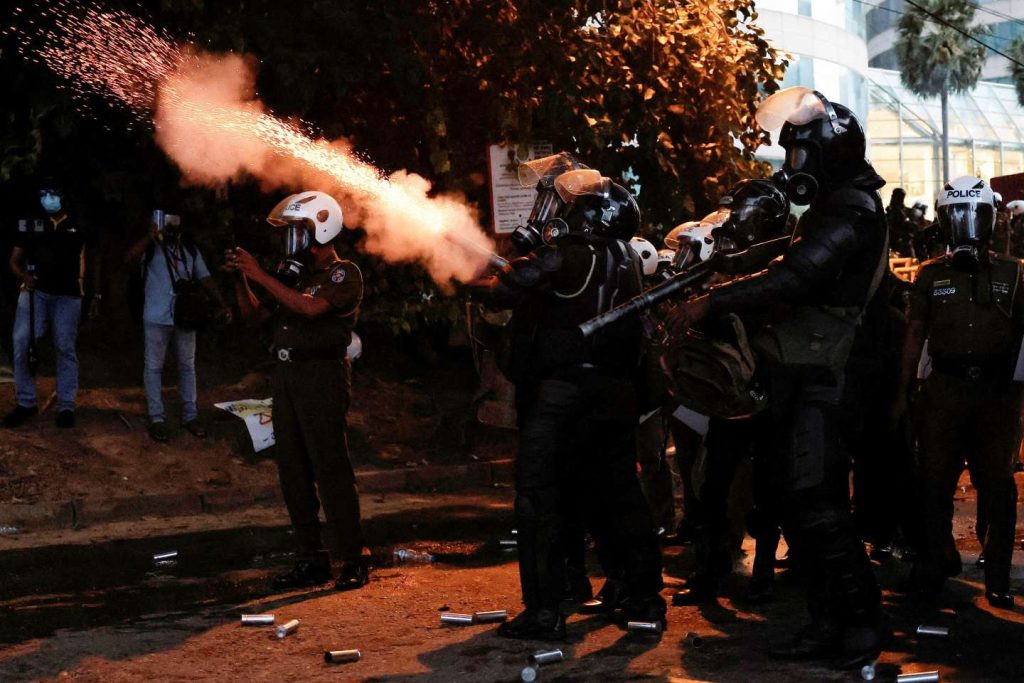
Sri Lanka President Vara, protesters invaded his official residence

Sri Lankan President Gotabaya Rajapaksa fled his official residence in Colombo on Friday, July 8 before being stormed by hundreds of protesters who accused him of being responsible for the An unprecedented economic crisis country faces. On Saturday, he said he is still the country’s president and is now protected by the army in an undisclosed location. Source from the Sri Lankan Ministry of Defense.
Sri Lankan Prime Minister Ranil Wickremesinga immediately called an emergency government meeting to discuss a “quick solution” of the ongoing political crisis. His office said in a statement that the person who should have replaced Rajapaksa in the event of his resignation invited the leaders of the political parties to join the meeting and also called for parliament to be convened urgently to discuss the crisis.
But after these political figures in the country asked him to leave office at the same time as the president, Mr. Wickremesinga announced that he had agreed to resign. The Prime Minister’s spokesman, Dink Columbag, said Mr Wickremesinga had said he was ready to leave office as soon as the parties in the country agreed to form a national unity government.
Curfew Failed
Local television channels showed pictures of hundreds of people carrying the national flag, tearing down several police barriers and climbing the gates of the presidential palace in the economic heart of the capital. Some protesters have streamed live videos on social media in which a crowd can be seen wandering inside the palace, storming the home’s offices, bedrooms and swimming pool.
Flash – Protesters storm the Presidential Palace in #SriLanka. President Gotabaya Rajapaksa… https://t.co/sKgdSBLaCp
This attack follows a demonstration that brought together tens of thousands of people to demand the resignation of Mr. Rajapaksa. Security forces attempted to disperse a large crowd gathered in the Colombo administrative district. The main hospital in the city reported that three people had gunshot wounds, while 36 others were experiencing breathing difficulties due to the extensive use of tear gas.
The day before, an indefinite curfew had been imposed in Colombo, while thousands of protesters had already begun to flock to demand the president’s resignation. “The curfew had no deterrent effect. It actually encouraged more people to take to the streets as a challengeA defense official said. Passengers request trains to reach Colombo. » Even with their meager reserves of gasoline almost depleted, the protesters, with the support of the main opposition parties, rented private buses to travel to the economic capital.
Economic mismanagement
Due to the lack of foreign exchange due to economic mismanagement and the impact of the crisis caused by the Covid-19 epidemic, this island nation is facing difficulties in importing essential products in particular, causing serious shortages of medicine, food and fuel. The United Nations estimates that about 80% of the population skip meals to meet shortages and rising prices. The population of 22 million has also suffered from accelerated inflation and prolonged power outages since the beginning of the year.
In April, Sri Lanka defaulted on its $51 billion external debt and entered rescue talks with the International Monetary Fund. The following month, several demonstrations erupted. Nine people were killed and hundreds injured during the unrest in the country.

“Unapologetic pop culture trailblazer. Freelance troublemaker. Food guru. Alcohol fanatic. Gamer. Explorer. Thinker.”
